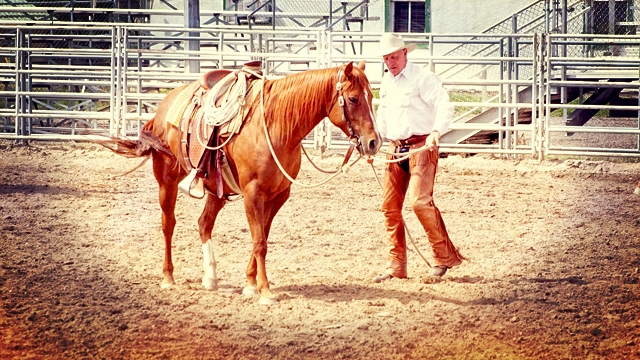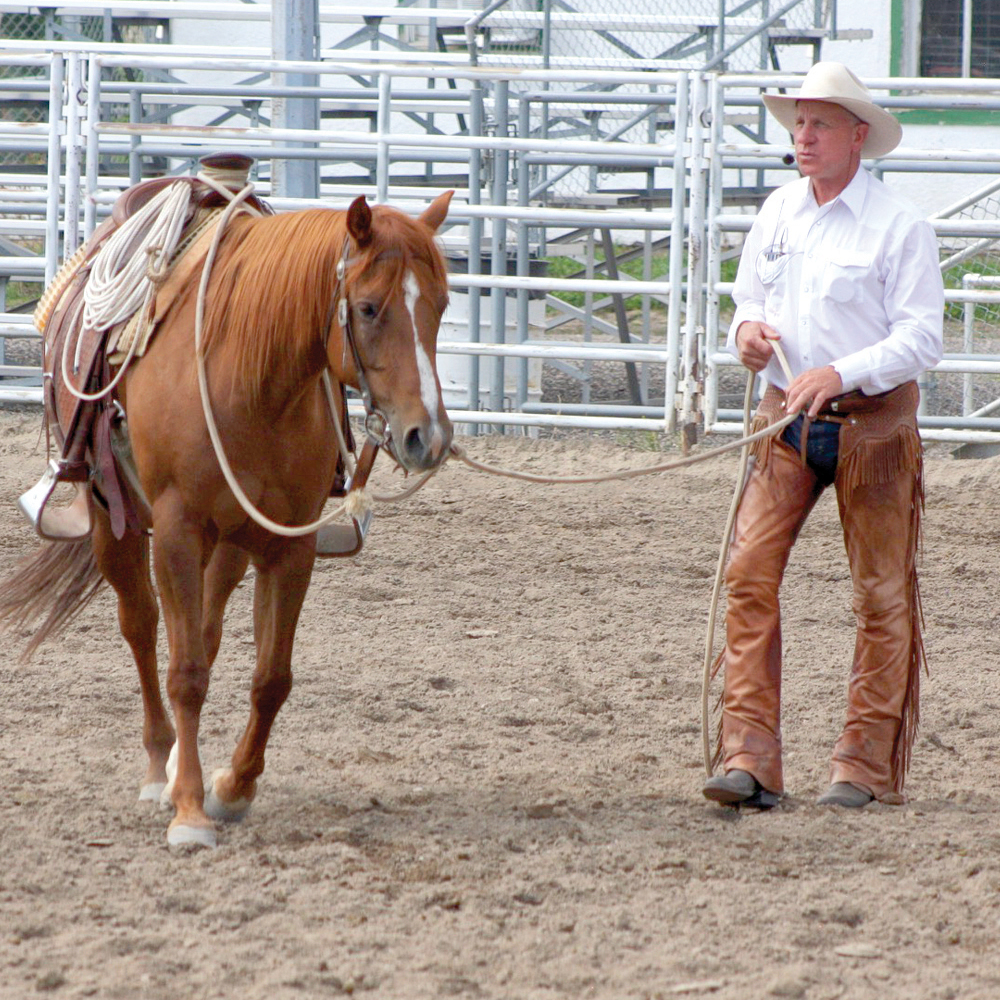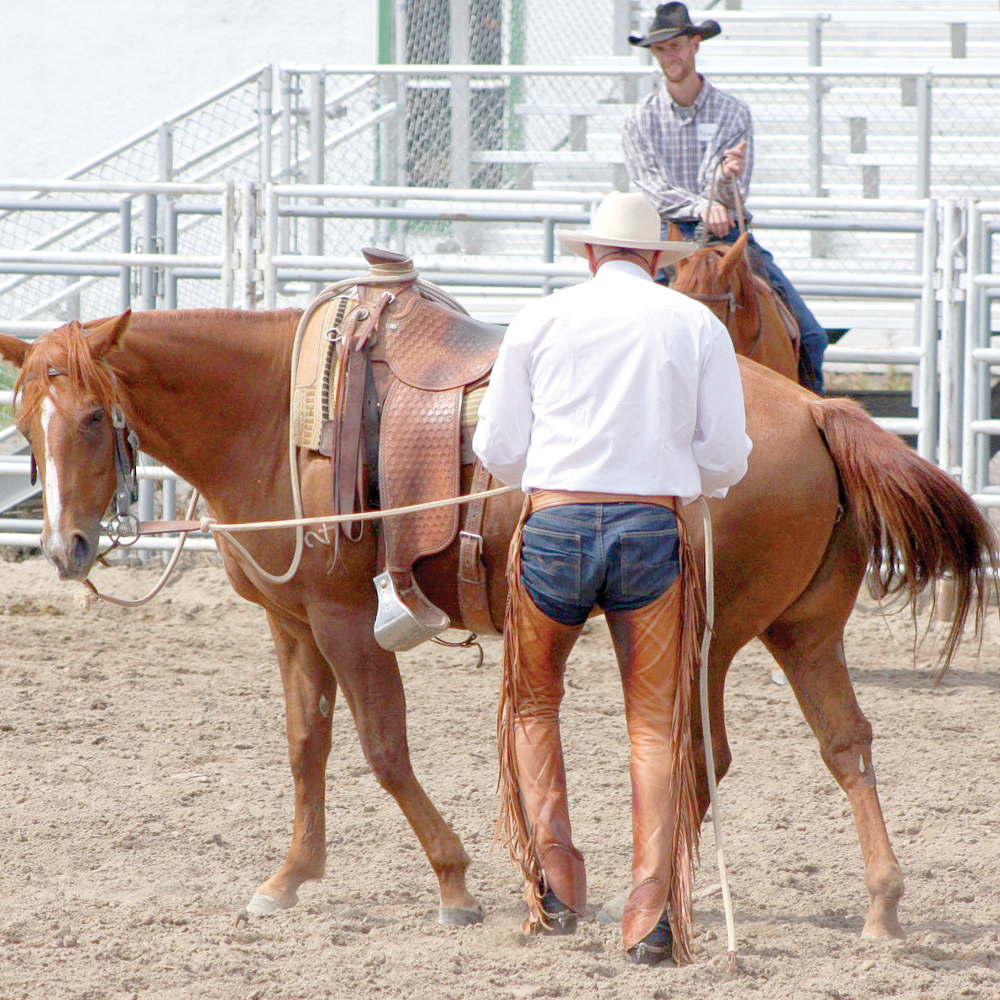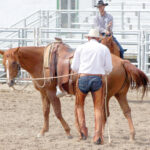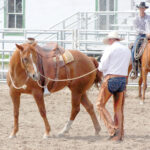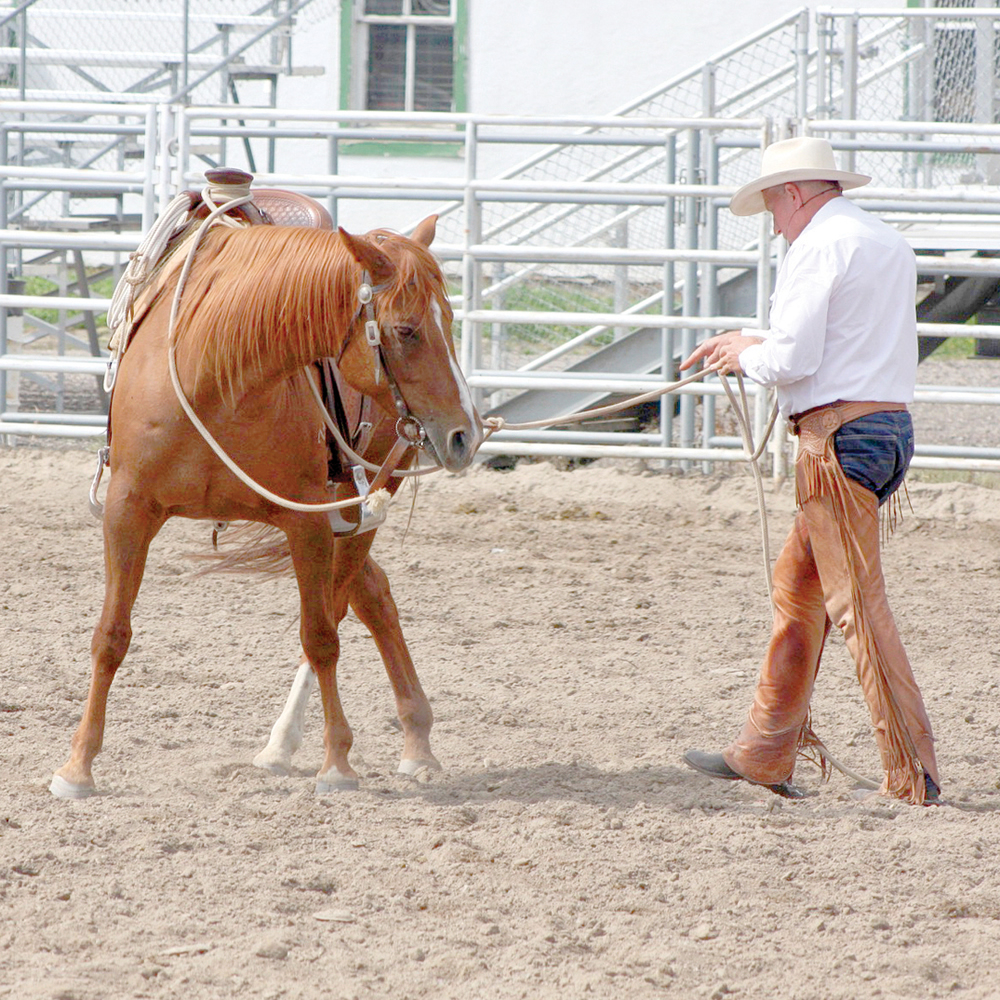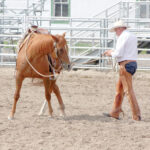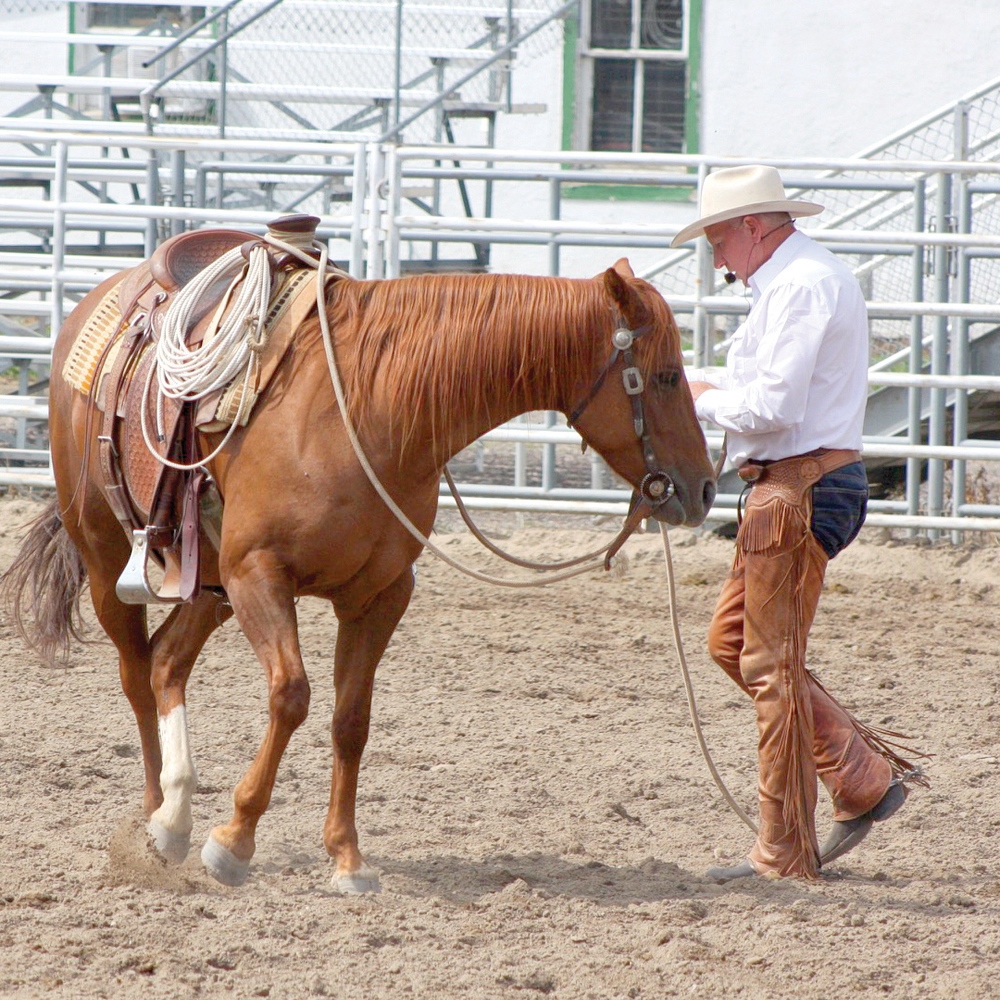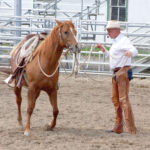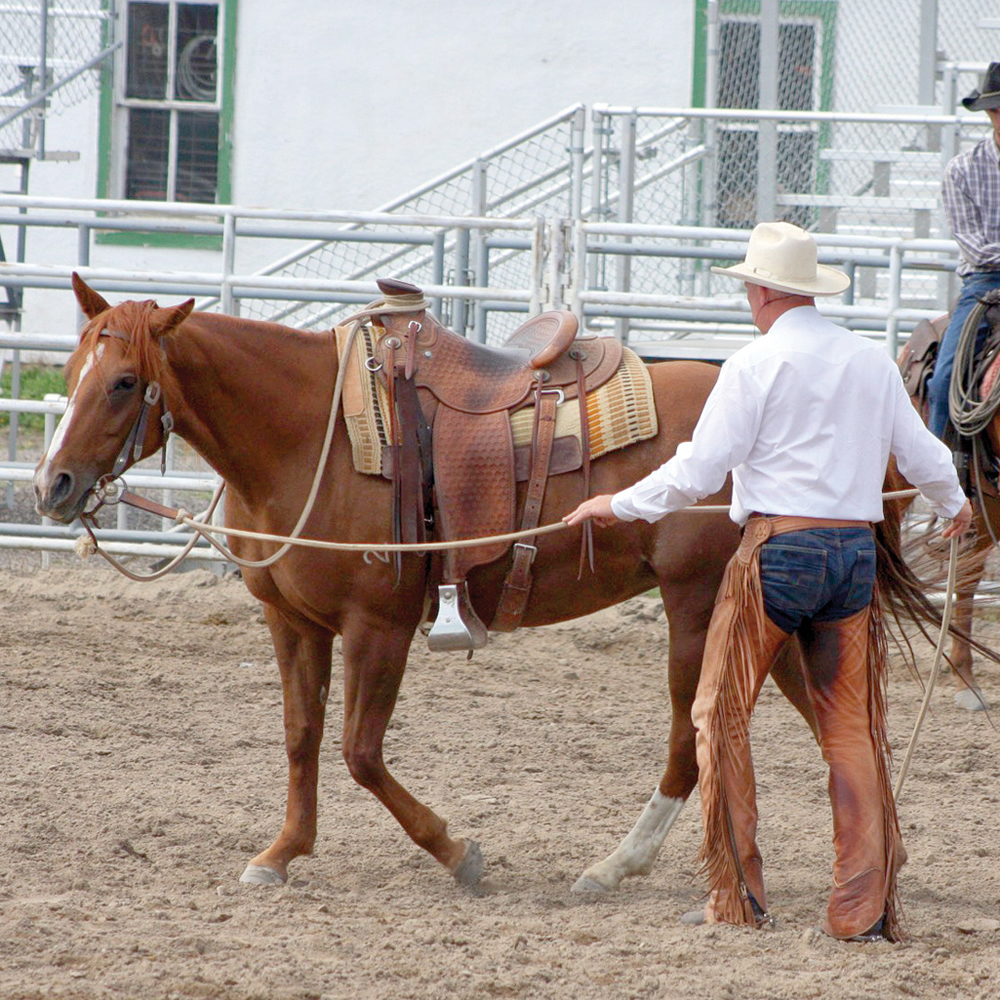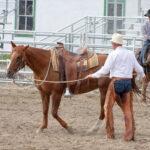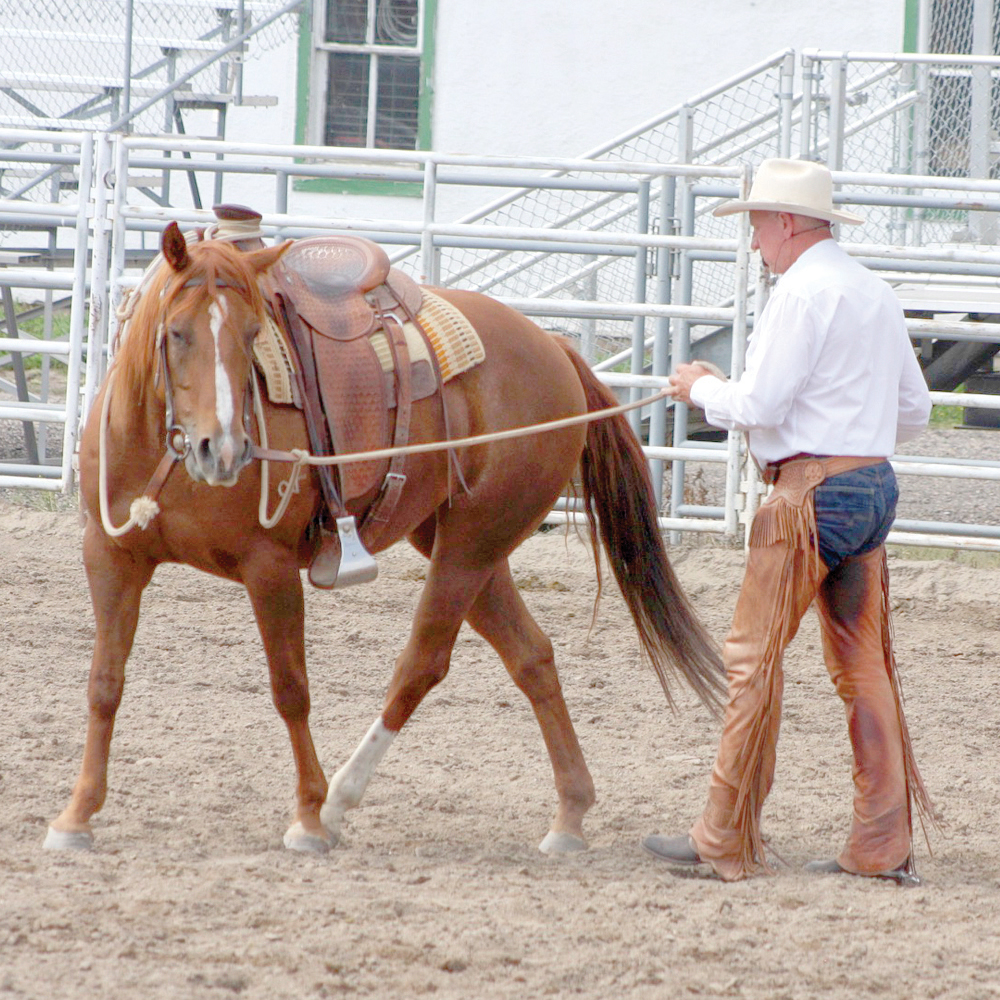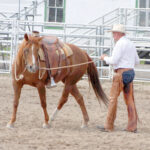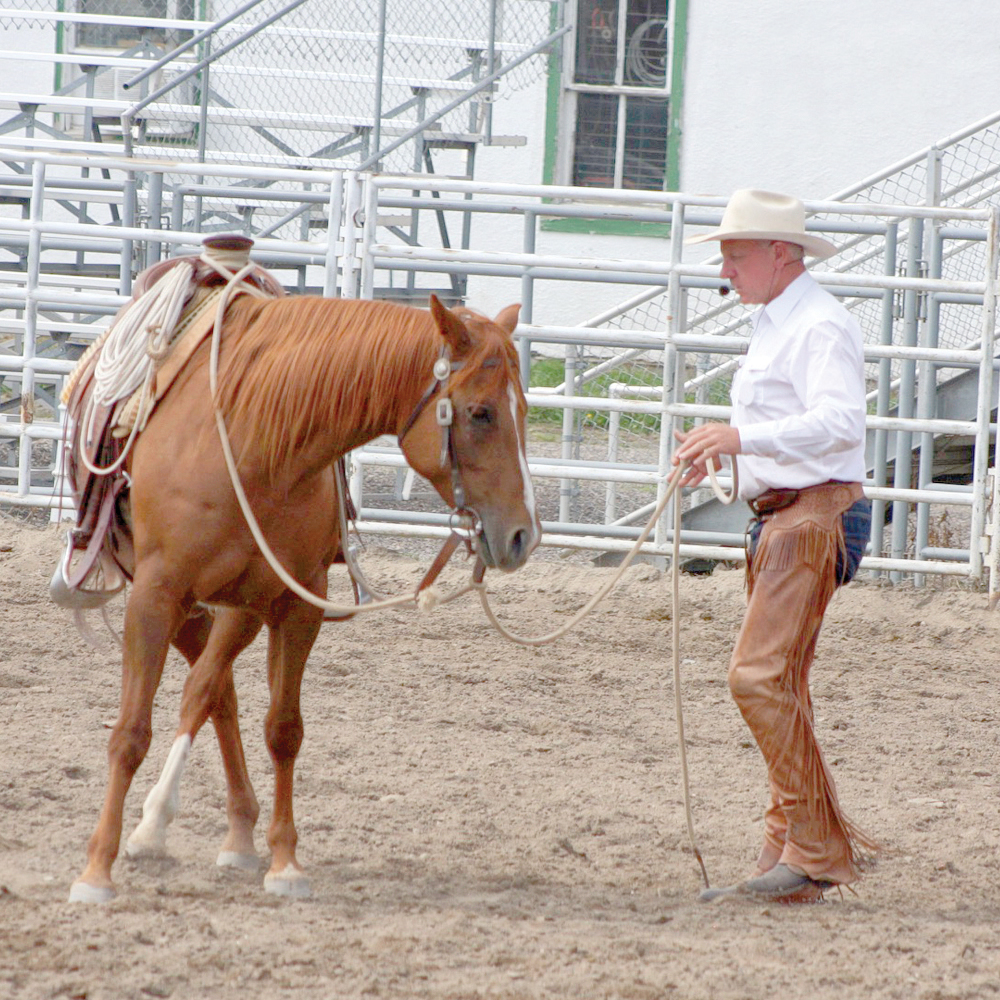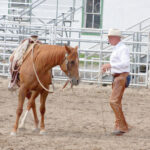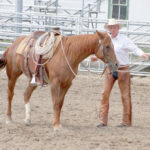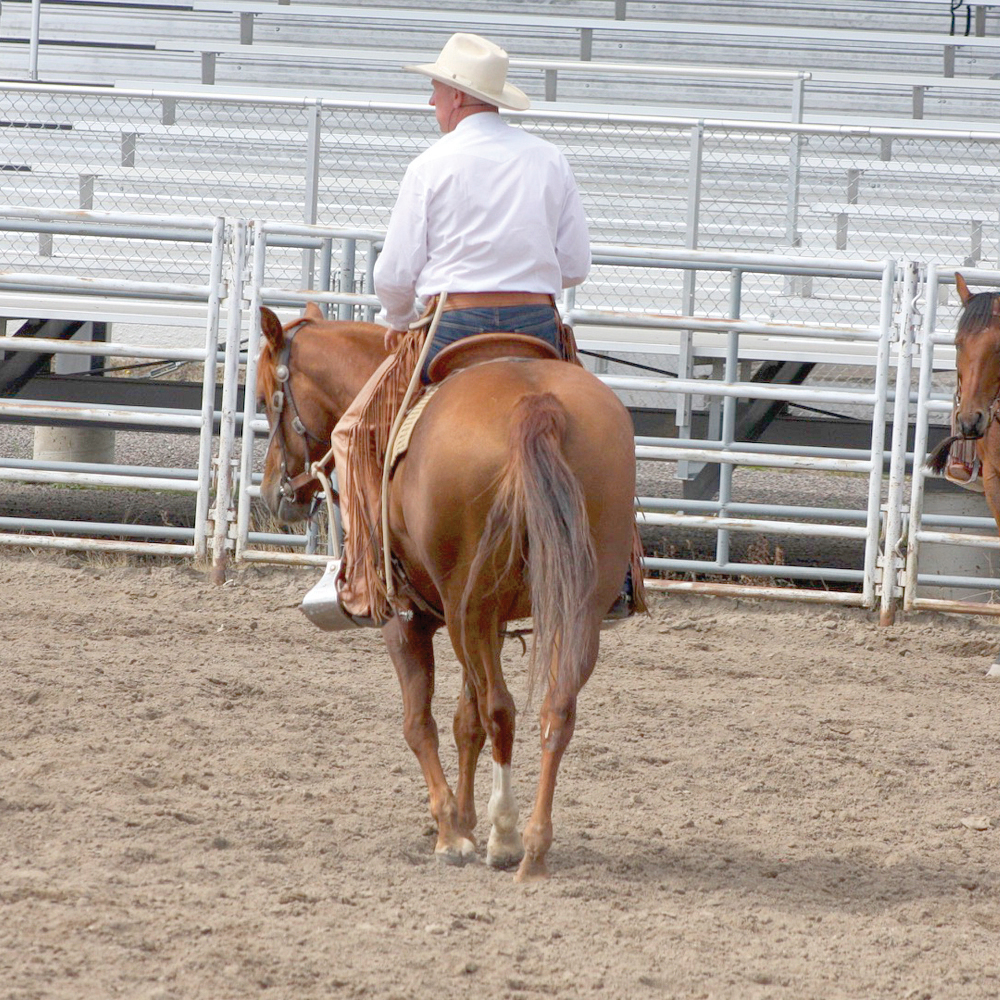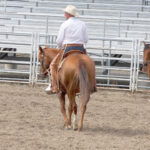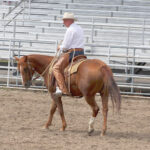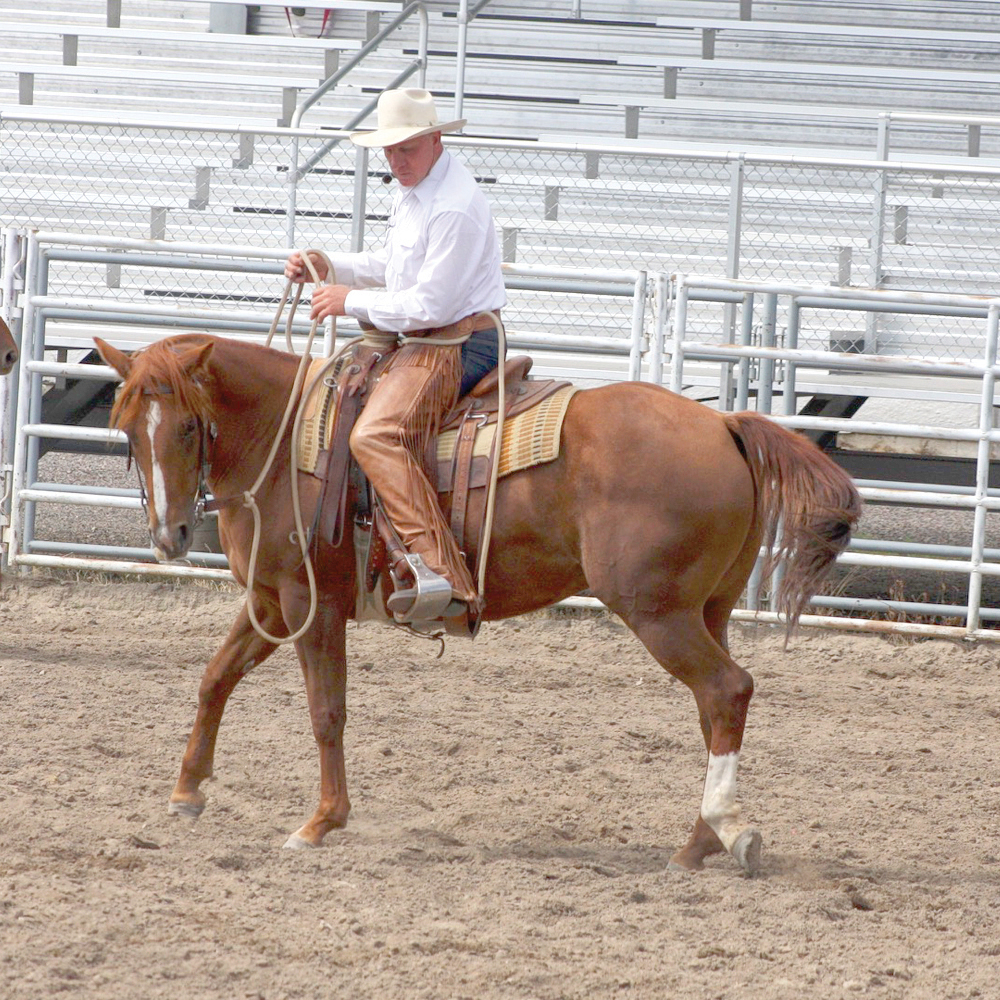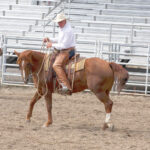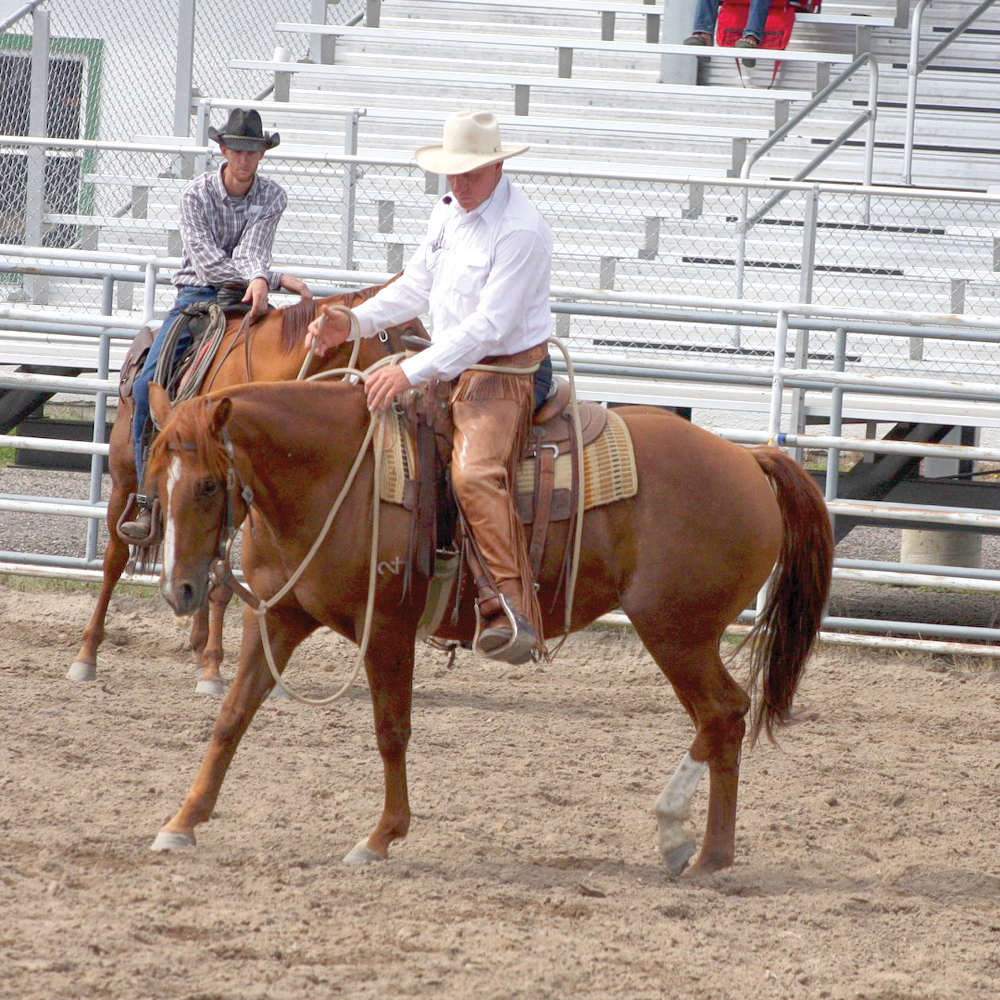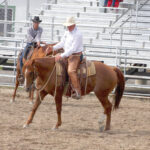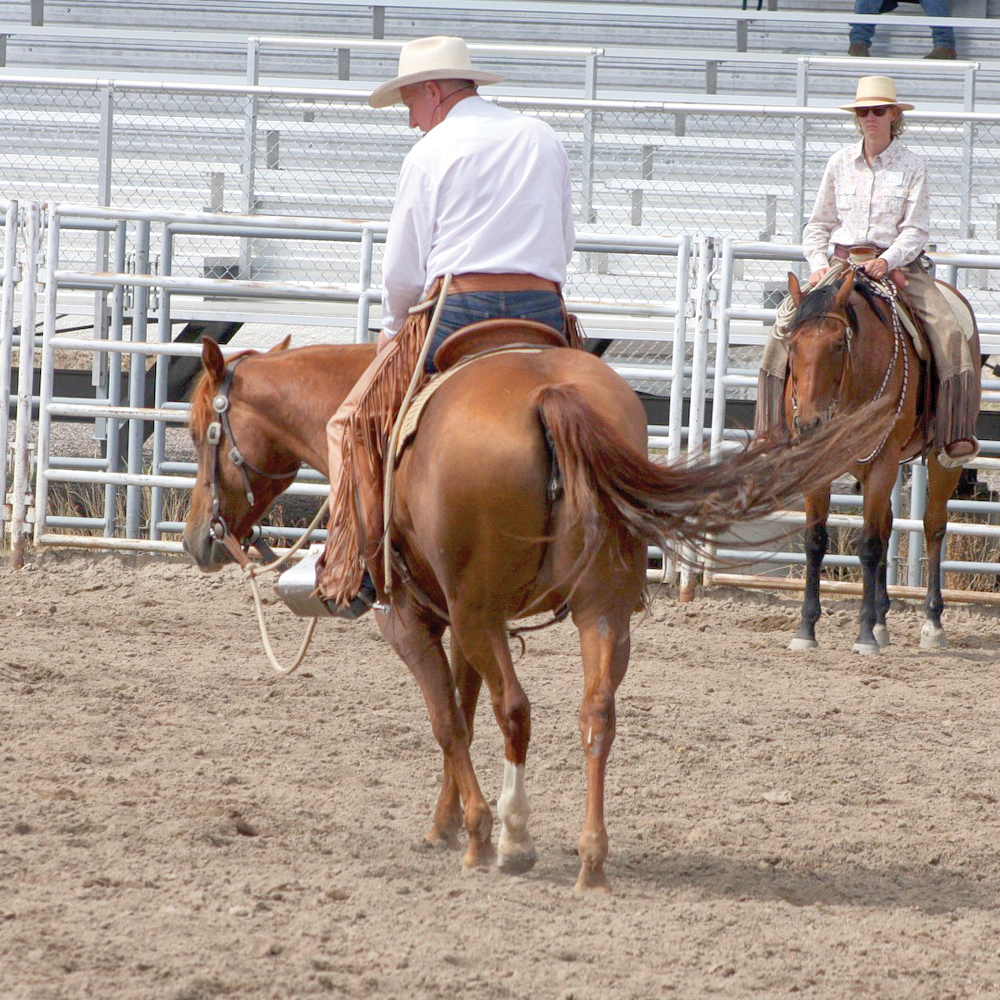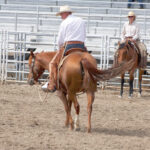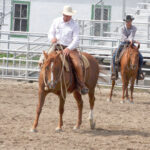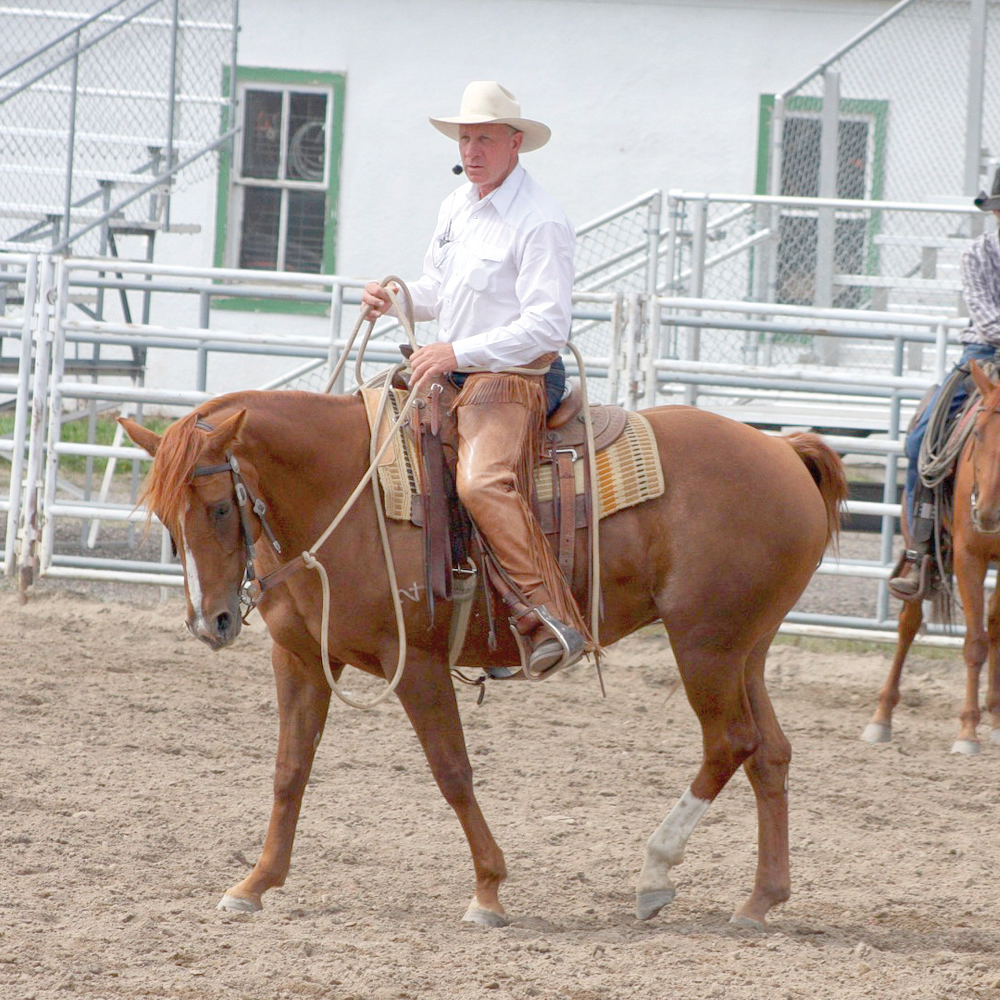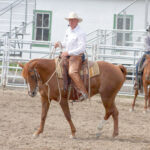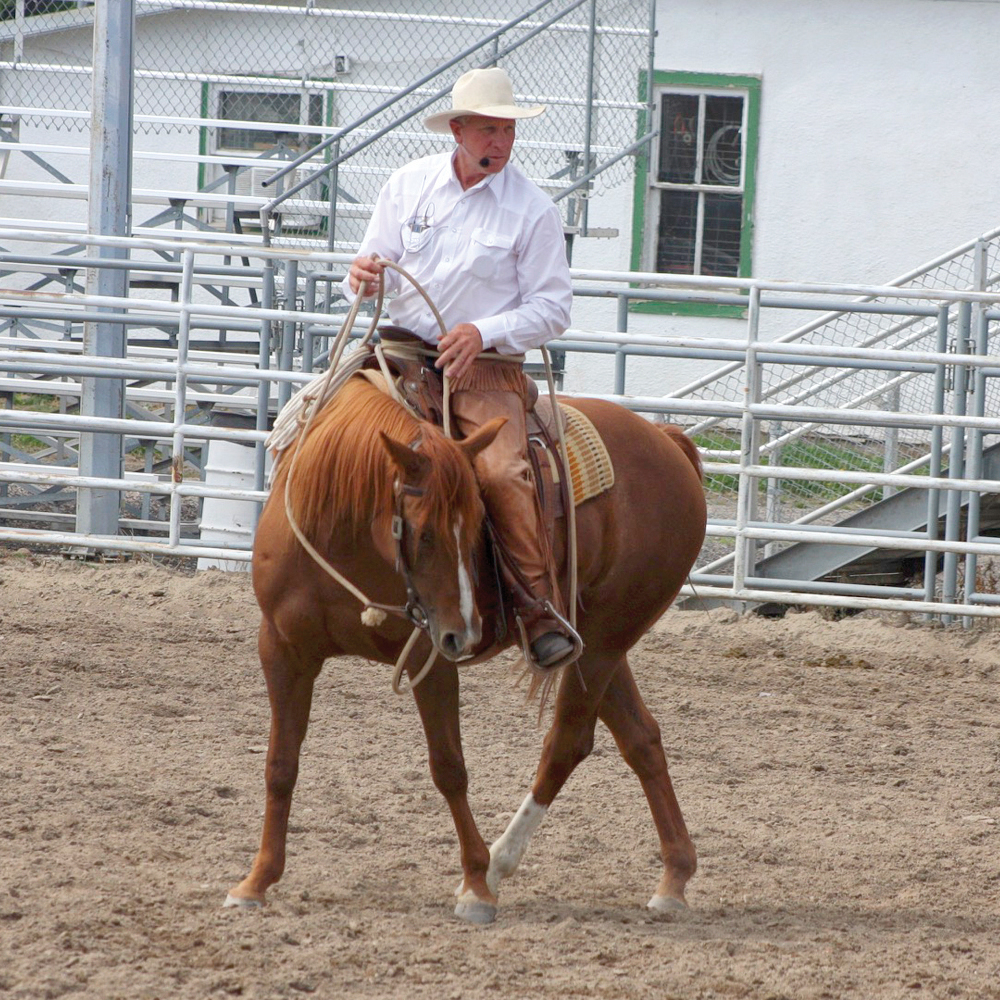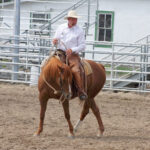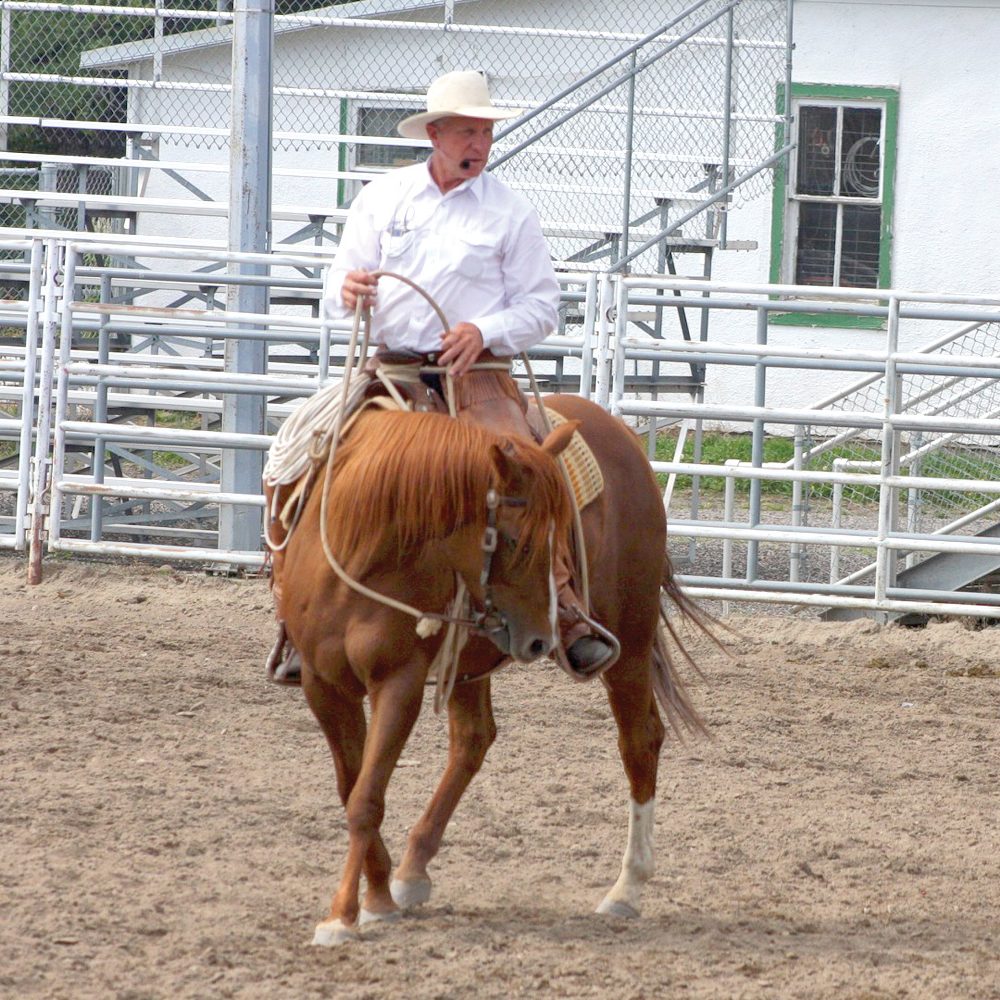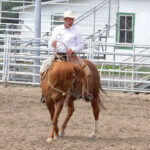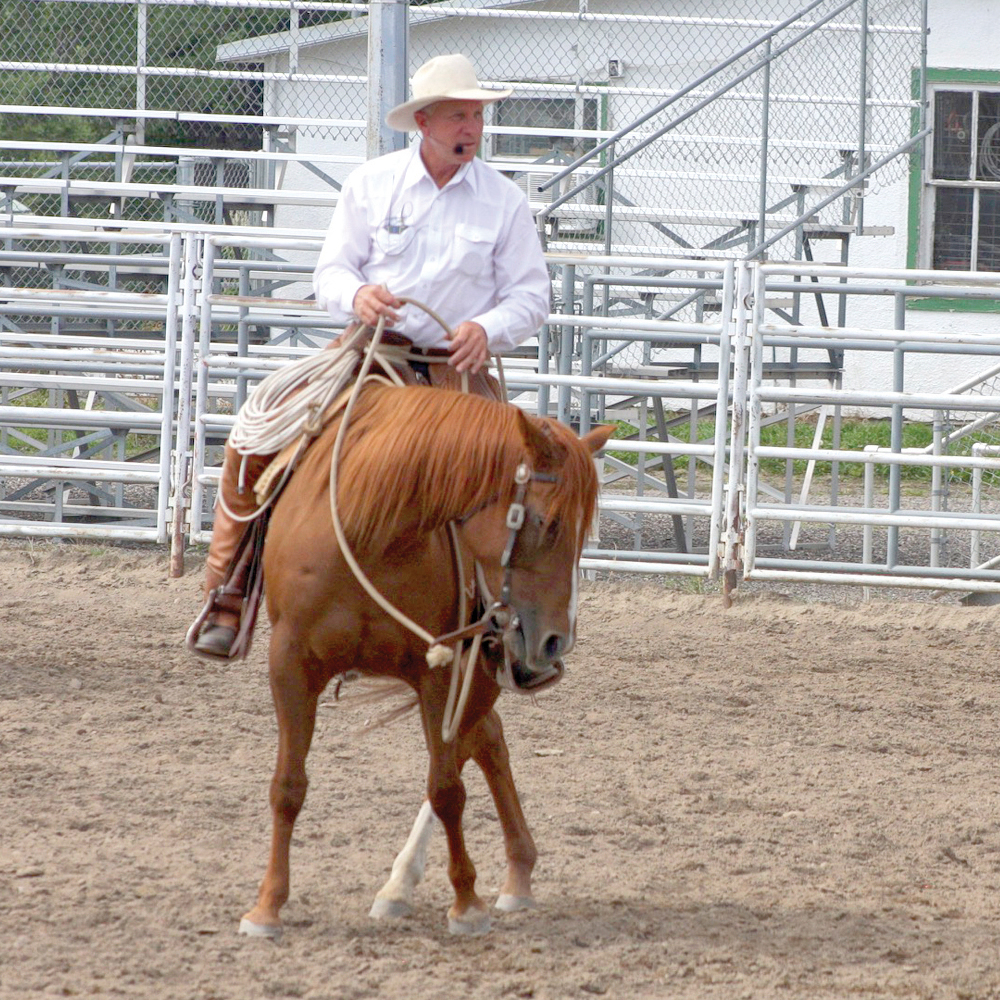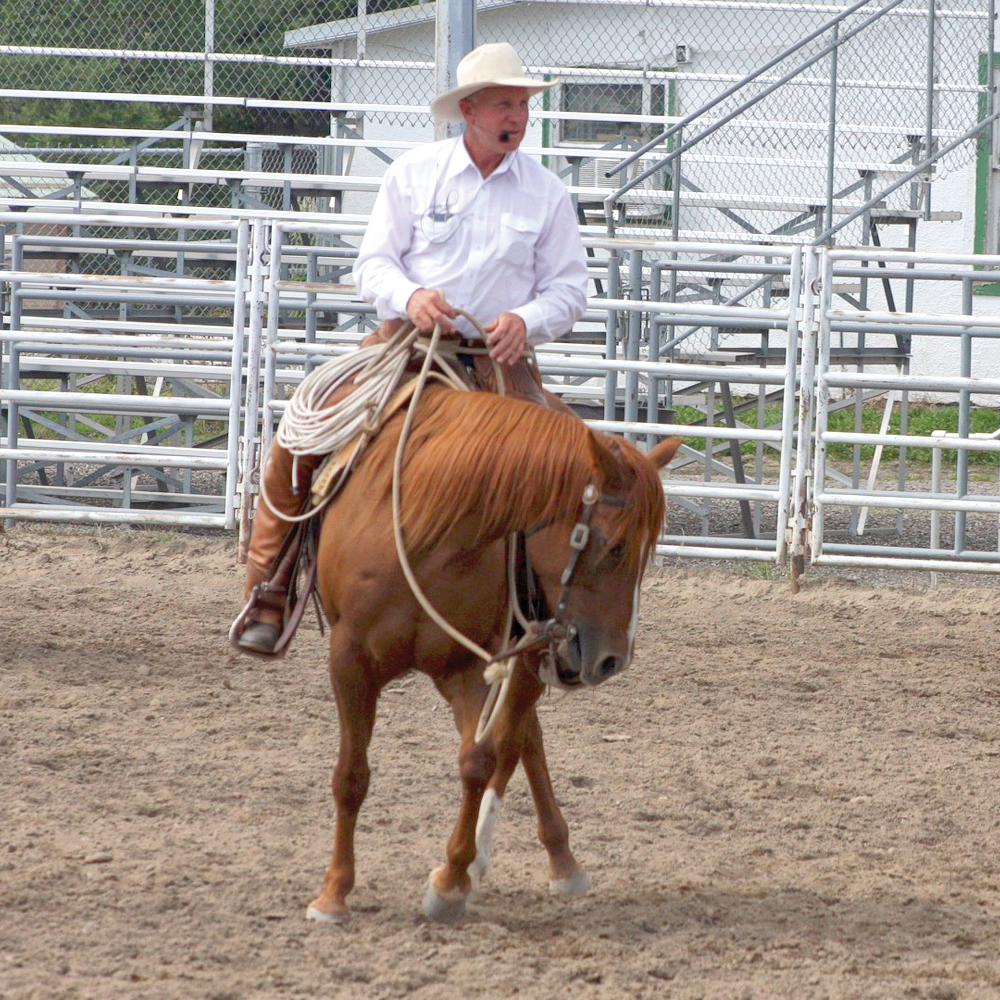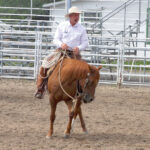Photos by Emily Kitching
This article originally appeared in issue No. 106
Editor’s Note: At a clinic when a troubled spot surfaces it’s a fantastic opportunity to explore what is causing an issue and how addressing the symptoms might not only help a particular horse and rider but also further clarify everyone’s understanding of a concept in general. In the following series of photos what started as Buck’s answer to a question about a troubled horse led to a demonstration of a vital concept and a deeper understanding of the foundation of engagement.
“When things like this surface, I hope everyone will store it away in their hard drive. I’m going to show you a way to help a troubled horse that is not truly stepping over behind. But beyond just a fear or a safety issue, this is the foundation of engagement.
“A horse must learn to engage between lateral flexion and movement first before you would ever use two reins to promote engagement of the hind end.
“You have to understand there’s some things some of you need to fix. If you’re not moving forward and through with the hindquarters well then, everything else connected to it is not going to work either.
“This horse that is bothered is not reaching forward and through with her inside hind leg. To start with, your timing needs to be better as to when you are asking… you need to consistently time up with when the inside hind foot is leaving the ground for your message to be clear. But she is shuffling sideways when you ask, stepping on herself as she does. If she was really amped up and you asked for her hindquarters she, could flip over backwards on you. And there are many of you on horses that you think are solid who are missing this piece. Your horse might be moving his feet sideways but shuffling instead of reaching forward and through. This is grade school stuff, knowing where the feet are.
“If you were on your horse’s back and couldn’t feel what is taking place, step off and work on it from the ground so you can help your horse find the answer and improve your timing. A horse that shuffles tends to stop moving forward, to lock up and shuffle sideways. I’ll demonstrate on my horse from the ground and then from her back what I call putting her on a drift.”
First on the ground…
… then from the saddle.
[ux_custom_products cat=”magazine-subscriptions” products=”” columns=”4″ title=”Subscription Options”]

